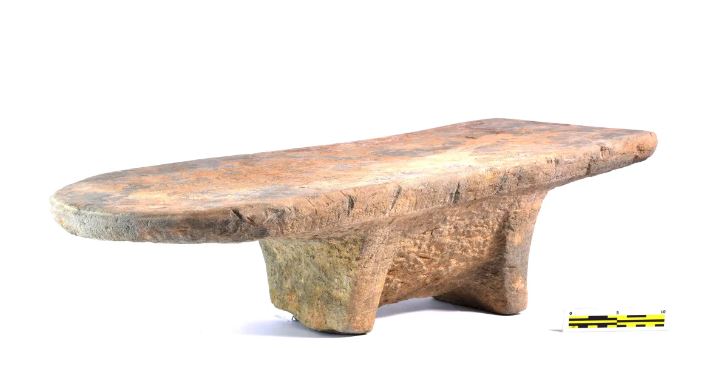
Curry Recipe Was Eaten 2,000 Years Ago – Study Reveals As Scientists Unearth Grinding Slab
Traces of spices detected on a grinding slab and other stone tools unearthed in Vietnam reveal that curry was eaten in the region at least 2,000 years ago.
The sandstone slab, buried 2 meters (6.5 feet) below the surface, was dug up in 2018 at the Oc Eo archaeological complex in southern Vietnam. The site was once an overseas trading hub of an ancient Southeast Asian kingdom known as Funan, according to a new study of the substances found on the slab.
“Preparing curry involves not only a diverse range of spices but also the use of grinding tools, considerable time, and human effort,” said study author Dr. Hsiao-chun Hung, a senior research fellow in the department of archaeology and natural history at Australian National University in Canberra.
“Remarkably, even individuals residing outside of India nearly 2,000 years ago expressed a strong desire to savor the flavors of curry, as evidenced by their diligent preparations,” Hung said.
Hung and a team of researchers analyzed microscopic remains known as starch grains tiny structures found within plant cells that can be preserved over long periods that they found on the grinding and pounding tools. Their analysis revealed several culinary spices that originated in different places around the world: turmeric, ginger, fingerroot, sand ginger, galangal, clove, nutmeg and cinnamon.
The findings offer clues to how curry — and the people who made it — migrated to Southeast Asia.
The ingredients the researchers identified are similar to those in curries eaten in Vietnam and other places in Southeast Asia today.
“Nowadays, preparing curry in Vietnam has become much simpler for most families due to the widespread availability of curry powder in supermarkets. However, it is interesting to note that the curry recipe used today has not deviated significantly from the ancient Oc Eo period,” said study coauthor Dr. Khanh Trung Kien Nguyen, an archaeologist at the Center for Archaeology, Southern Institute of Social Sciences in Ho Chi Minh City, Vietnam.
Nguyen added that the team planned to recreate the 2,000-year-old curry based on the ingredients found at the site.
People were likely enjoying curry in India about 4,000 years ago, as evidenced by traces of turmeric, ginger, eggplant and mango found in cooking pots and dental plaque, the study noted, but this recent finding reveals that the production of curry has a long and fascinating history beyond India as well, Hung said.
Some of the ingredients recovered from Oc Eo, such as turmeric, are similar to those found in Indian curries, while other components are more distinctively Southeast Asian, including coconut milk and galangal, a spice commonly found in curry pastes in that region but seldom used in Indian curry.
About Author
Discover more from BillionBill
Subscribe to get the latest posts sent to your email.


